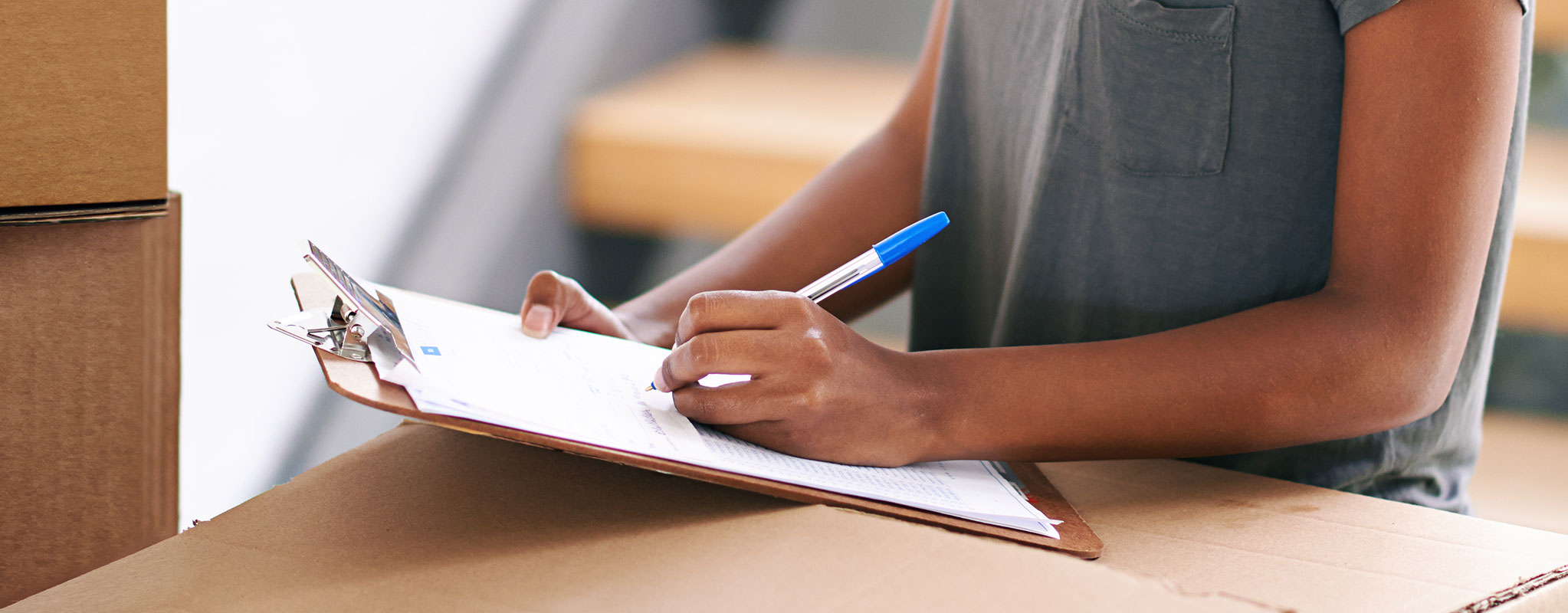Periodic property inspections are essential to ensure your unit stays in good condition. Not only does it allow you to repair maintenance issues, but it keeps you protected financially as well. By regularly tracking the condition of the unit, you will know which damages are the result of normal wear and tear and which were caused by tenants.
There are a few different types of rental inspections that you’ll need to do at different stages in the rental process. Our free rental inspection checklists will walk you through each step.
Let’s begin by discussing move-in, move-out, routine, and drive-by rental inspections.

1. Itemized Rental Property Move-in Checklist
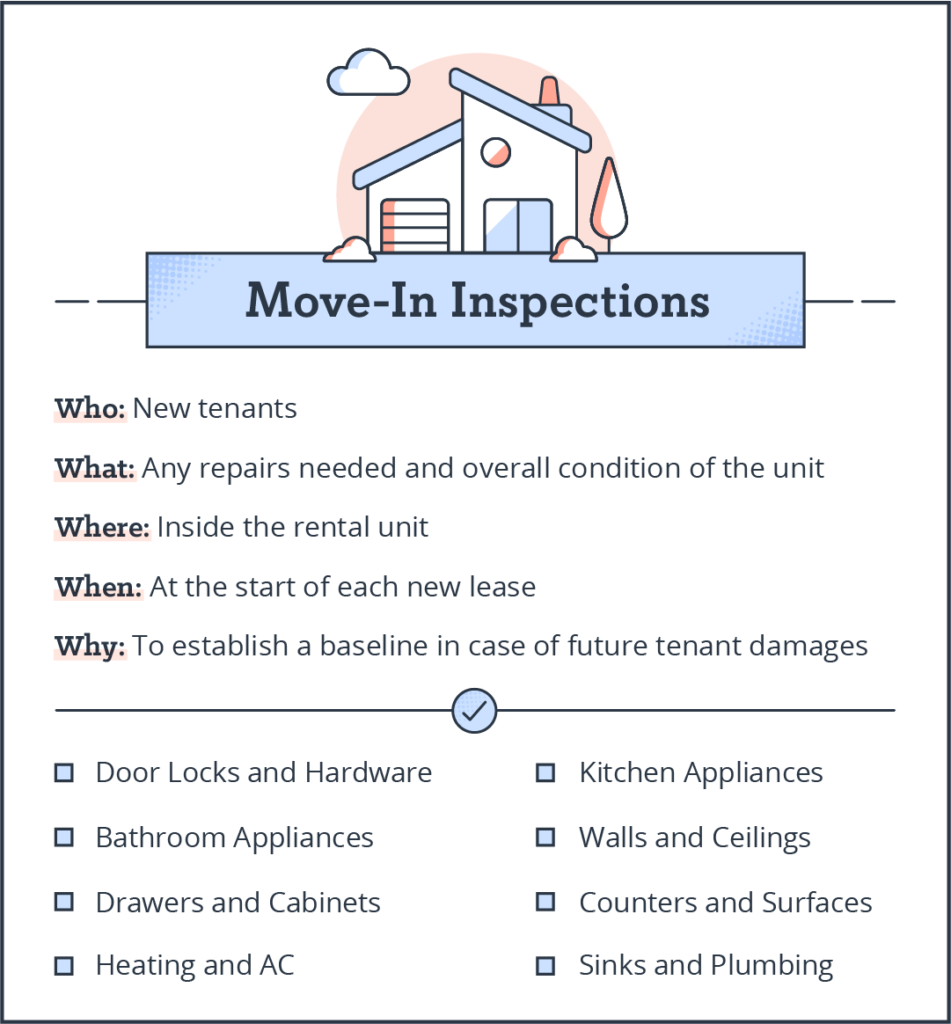
By recording the condition of each room at the start of the lease, you’ll be able to tell if any damage has been caused by the tenant.
This practice helps protect your investment. Otherwise, tenants could reasonably claim that the damage was already there when they moved in.
It’s ideal to conduct this inspection with your tenant before move-in. This order of operations makes it easier to evaluate the condition of the floor and walls without any furniture in the way. You should also be on the lookout for any repairs that need to be taken care of before the tenant moves in.
2. Itemized Rental Property Move-out Checklist
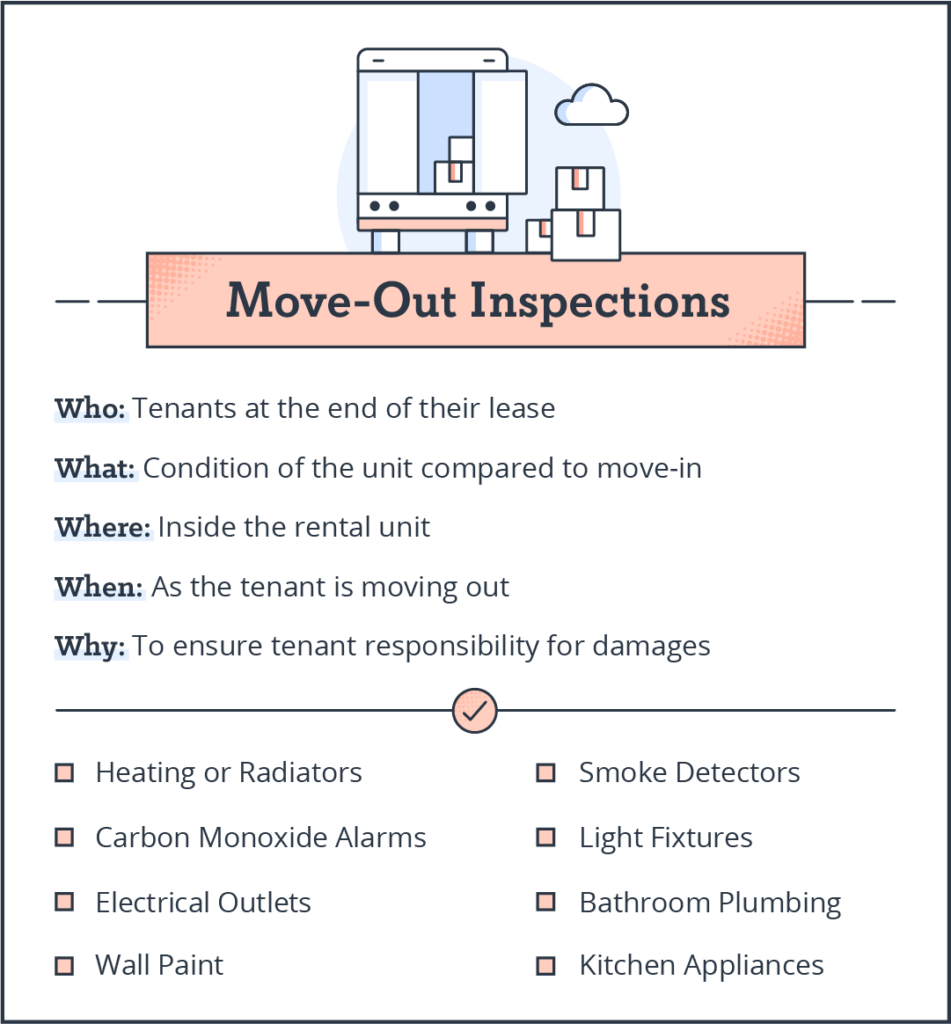
When conducting a move-out rental property inspection, bring along the move-in checklist you filled out at the start of the lease. The inspection process is basically the same as when your tenant moved in:
- Contact your tenant so you can both be present for the inspection.
- Carefully inspect each item on the list.
- Compare the condition with what you recorded on the move-in checklist.
If anything is noticeably different from what you wrote on the move-in checklist, such as scratches on the walls from moving furniture or a broken light fixture, you may be able to withhold some or all of the security deposit in order to pay for the repairs. Be sure to keep in mind that units will be exposed to normal wear and tear, and that tenants are only responsible for significant damage.
By showing the tenant both the move-in checklist and move-out checklist, they should have no reason to argue that they weren’t the cause of the damage.
3. Routine Rental Property Inspection Checklist
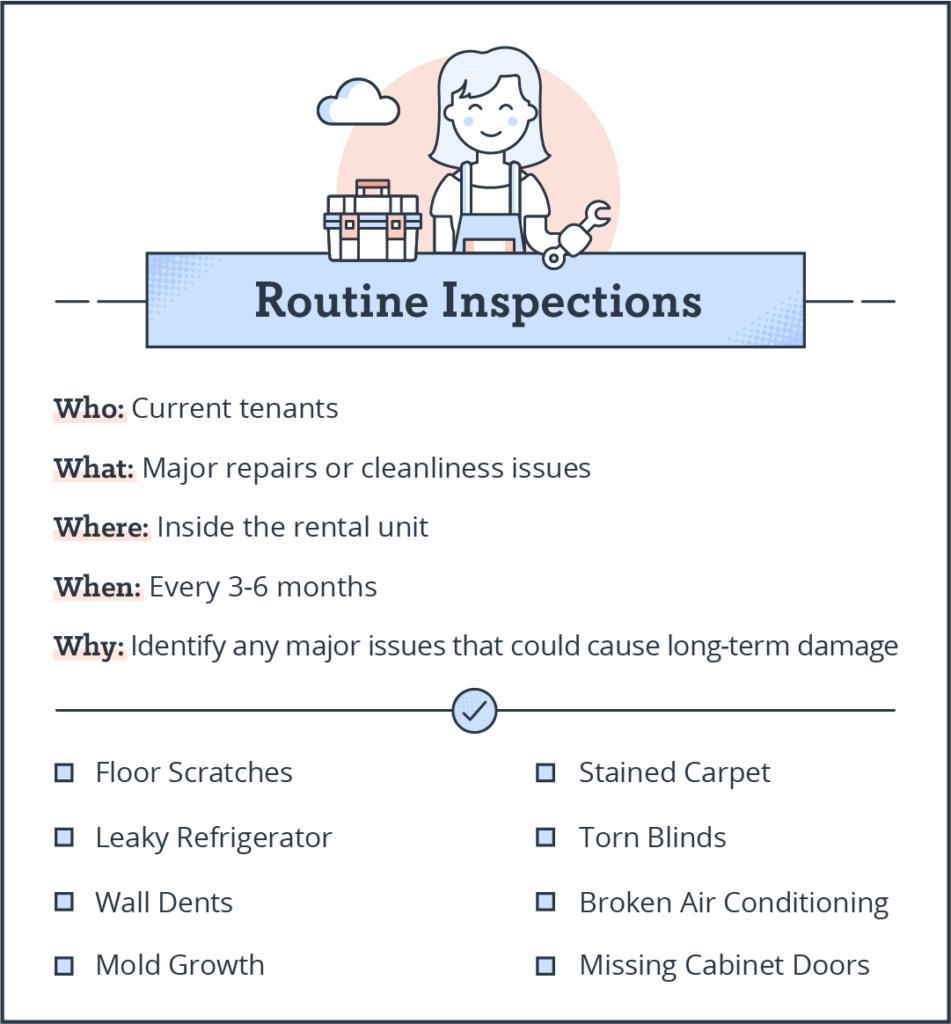
In addition to the standard move-in and move-out checklists, many landlords also choose to conduct routine rental property inspections.
Routine inspections should be conducted every three to six months since they’re a good way to check in on the condition of the rental to see if anything is significantly damaged or needs repairs.
Be sure to give your tenant advance notice so they may be present for the inspection if they wish, though their presence is not as essential as it is for a move-out or move-in inspection.
Routine inspections do not need to be as thorough as move-out or move-in inspections. Landlords may still wish to bring along their move-in checklist as a reference, but this type of inspection is more useful for keeping a handle on any major repairs or cleanliness issues.
4. Drive-By Rental Property Itemized Inspection
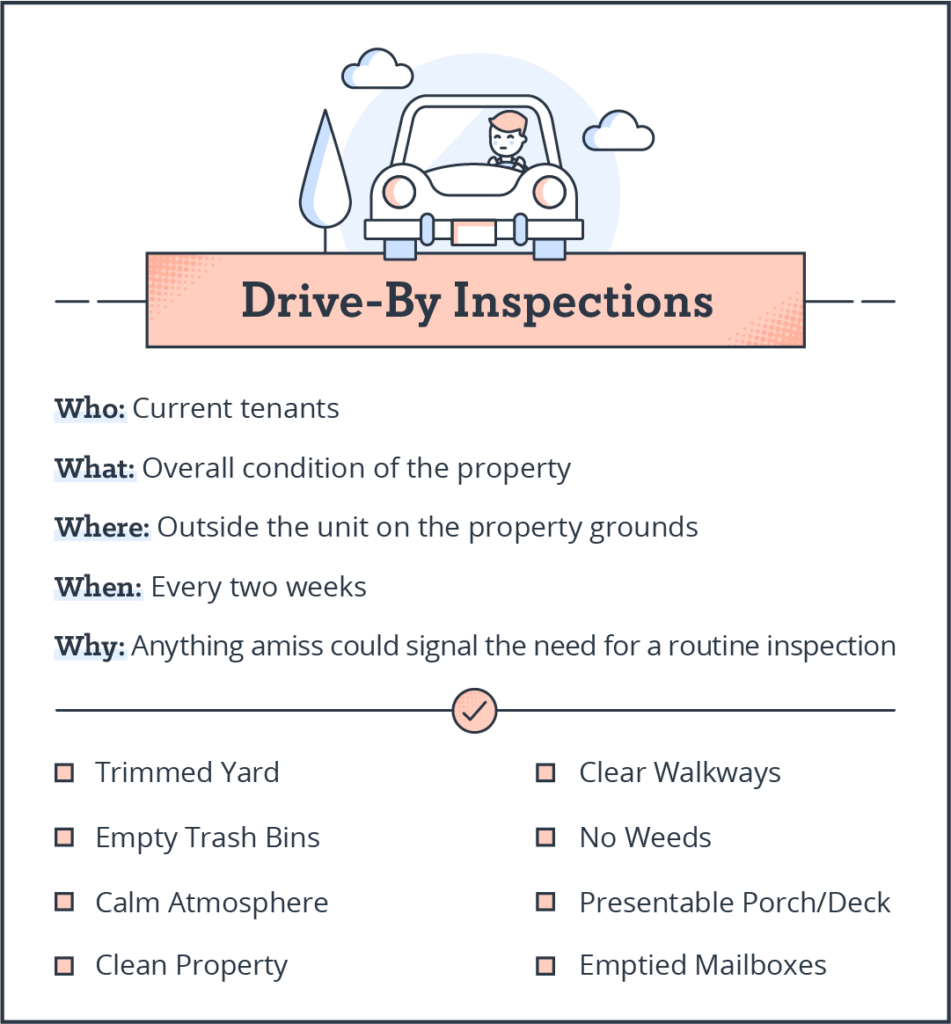
Landlords don’t need to alert tenants if they are planning to do a drive-by inspection since they won’t actually be entering the unit. Conducting a drive-by inspection can mean simply driving by the property or getting out and doing a quick walk around to make sure everything looks okay.
Nearby landlords should visit their properties at least once every two weeks to make sure nothing is amiss. If you notice any damages outside the units or potentially worrying behavior on a drive-by inspection, that may be a good indication that it’s time for a routine inspection.
How to Conduct a Respectful Property Inspection
In order to uphold the covenant of quiet enjoyment, landlords should be respectful when conducting property inspections. You have every right to inspect the property periodically to make sure it’s being taken care of, but remember that these inspections can be disruptive to tenants. Be sure you:
- Give Proper Notice. Make sure to always give at least 24 hours notice if you will be entering the unit in the case of a move-in, move-out or routine inspection. This gives the tenant time to adjust their schedule if need be. Check your local landlord-tenant laws to determine the amount of notice needed.
- Encourage the Tenant to Be Present. If the tenant is conducting the inspection along with you, it ensures that you will be in agreement on the state of the unit and any potential damages. Plus, the tenant may feel more comfortable having you in their home if they are there as well.
- Don’t Go Overboard. A routine inspection every few months is reasonable. If you’re entering the unit every other week or visiting the property every day, you’ll make the tenant feel overly-scrutinized and uncomfortable.
- Be Careful With Photos. If you’re recording damages, it is important to take photo evidence. But be careful that you’re taking pictures of the evidence only – not of the tenant’s personal belongings.
Regular rental inspections are important to ensure the unit remains in good condition, and that landlords are financially protected from tenant damages. Having a thorough rental inspection checklist for each situation can help you make sure you aren’t missing a single detail. Take a look at our easy landlord forms for more detailed move-out checklists, move-in checklists, inspection reports and more!
Download all Four Inspection Checklists
Our checklists are in a pdf format, and easy to print and fill out.
